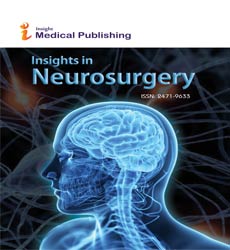Abstract
Cytotoxic brain tissue edema after traumatic brain injury:
Cytotoxic brain tissue edema, which is found in both grey and white matter cells, is a complicated secondary consequence to ischemic injury following cerebral diseases such as traumatic brain injury (TBI) and stroke. To some extent the pathophysiological mechanisms are known, however far from complete. A new hypothesis regarding the etiology to cytotoxic brain edema is presented. The hypothesis is that external energy due to TBI and internal energy due to mechanical forces following stroke results in the disruption of non-covalent and covalent bonds in protein and nucleotide structures. The unfolded proteins attract water molecules while the disruption of nucleotides such as adenosine-tri-phosphates causes a dysfunction In ion hemostasis and which may tentatively explain the etiology to cytotoxic edema. Our studies using computer models show that the kinetic energy following an impact to the head has the potential to break the chemical bonds in the protein and nucleotide structures resulting in cytotoxic brain tissue edema. Since folding of mature proteins is very much dependent on normal energy supply, the protein synthesis cannot continue during the ischemic process. Under such conditions very little of the energy rich ATP can be produced and which may result in disturbance between extraand intracellular ion metabolism. By using a folded protein in laboratory investigation, the present hypothesis has the potential to be confirmed and hence develop new drugs for therapeutic use.
Author(s): Hans von Holst
Abstract | Full-Text | PDF
Share this

Google scholar citation report
Citations : 31
Insights in Neurosurgery received 31 citations as per google scholar report
Abstracted/Indexed in
- Google Scholar
- Directory of Research Journal Indexing (DRJI)
- WorldCat
- Secret Search Engine Labs
Open Access Journals
- Aquaculture & Veterinary Science
- Chemistry & Chemical Sciences
- Clinical Sciences
- Engineering
- General Science
- Genetics & Molecular Biology
- Health Care & Nursing
- Immunology & Microbiology
- Materials Science
- Mathematics & Physics
- Medical Sciences
- Neurology & Psychiatry
- Oncology & Cancer Science
- Pharmaceutical Sciences
